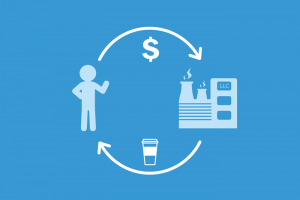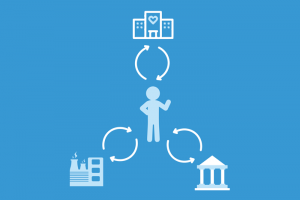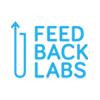A feedback loop is a two-way stream of communication between someone who designs a program or service and someone who uses that program or service.
How Feedback Works
In the world of business, feedback loops occur when consumers use their purchasing power to either buy a product or not buy a product. If they like something, they purchase the product. If they don’t like it, they don’t purchase it. As a result, companies have a constant, real-time communication with consumers – they understand consumers preferences and needs, without having to ask them directly.

But what about in aid, philanthropy, nonprofits, and government?
There is no automatic mechanism in social impact sectors for people who use a service to express their opinions on that service. While the business world has purchasing power and the political world boasts voting power, the world of social good has left its constituents’ voices behind in the decision-making process.

Steps of a Closed Feedback Loop
One of the major misconceptions about feedback is that it is a one-way process, where the user gives the provider feedback. In reality, the feedback process is a loop. It’s a continual cycle that feeds into itself and requires input from both service users and providers.
The feedback loop starts with buy-in from the service providers, and the people who use the service. Everyone has to be on board with the idea of doing feedback. Then, the service provider must design a strategy for collecting feedback. Will they do paper surveys? Mobile surveys? Hour-long one-on-one focus groups? What questions should they ask? What steps will they take to ensure an honest response? Next, the service provider uses the system they designed to collect feedback from those who use the service. The service provider takes the feedback they collected and analyzes it – what trends do they see in the responses? Now, the service providers take their analysis back to the community they collected feedback from and starts a dialogue. Do the service users agree with the service provider’s analysis of their feedback? Once both groups come to a consensus about the feedback they collected and what it means, the service provider course corrects their program to reflect the feedback.

Want to Learn More?
Feedback 101 is an introduction to the concepts and practice of feedback and includes a collection of our favorite stories and resources for understanding feedback across sectors and contexts. It is for thinkers and doers in aid, philanthropy, nonprofits, and government. It’s both for those new to the feedback community and those who have been involved but want a deeper understanding of the value, benefits, and practice of feedback loops. Inspiring articles and discussion questions will guide you through the learning process.
